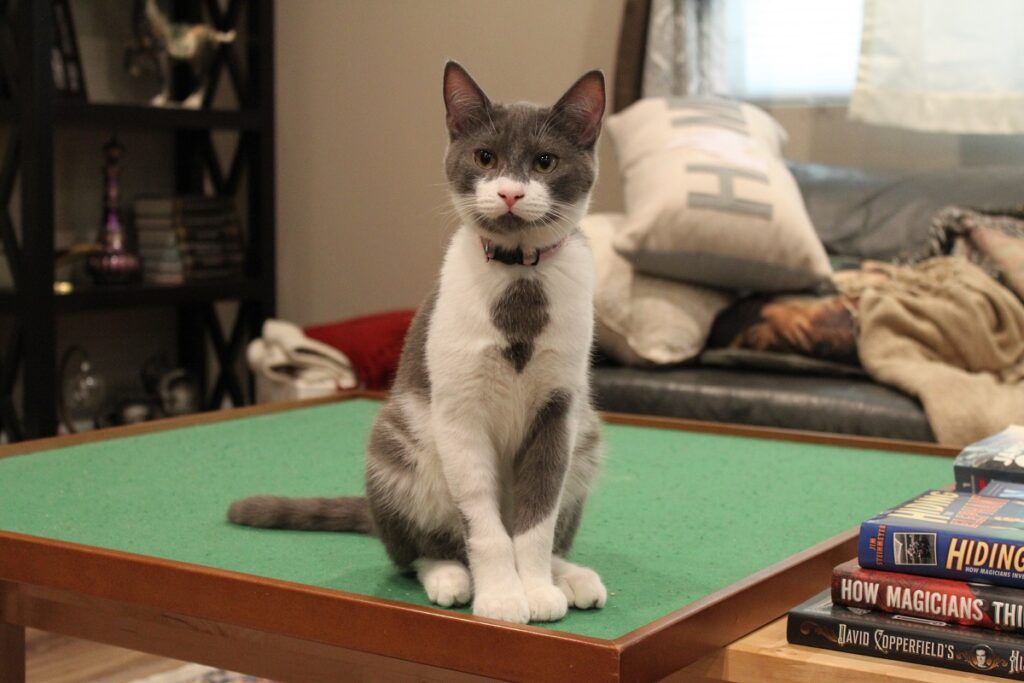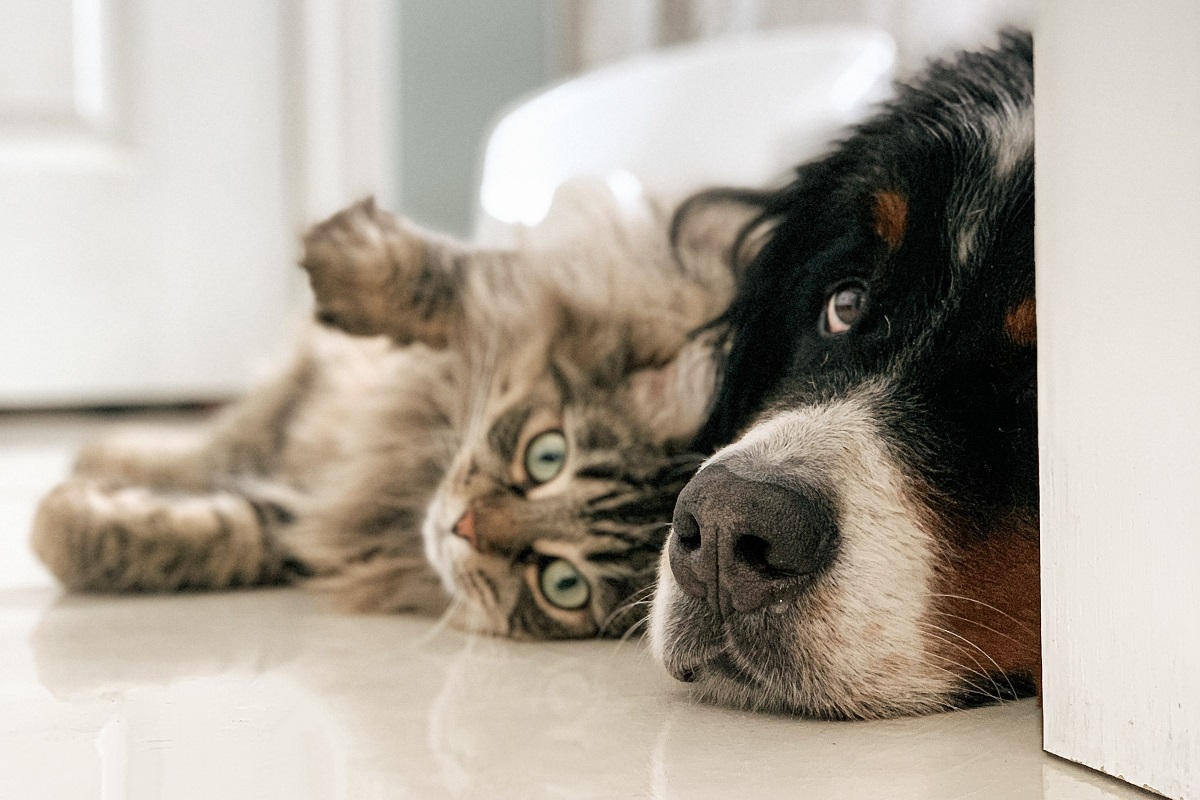Bringing a cat and a dog under the same roof might sound like the start of a cartoon brawl, but it doesn’t have to be a disaster. In fact, with a little patience and planning, introducing a cat to a dog can be a smooth and surprisingly peaceful experience.
The key? Understanding both animals’ instincts, creating the right environment, and managing the process step by step. Whether you’re bringing home a new puppy, a sassy kitten, or you’re blending longtime furry companions, this guide will walk you through how to do it right.
Set the Stage Before They Meet
Before the face-to-face introduction, you’ll want to set up some safe zones. Give your cat a room of their own, complete with food, water, a litter box, cozy spots, and a few vertical perches. This is their temporary “do not disturb” zone.
Let your dog sniff around outside the door, but don’t let them rush in. Getting used to each other’s scent is an important first step, and a closed door keeps everyone safe while curiosity builds in a controlled way.
If possible, swap bedding between your dog and cat. This allows them to smell each other in a low-pressure way, long before there’s any eye contact. Think of it as their way of exchanging business cards.
Teach Your Dog to Stay Calm
Even the most well-behaved dog can get a little too excited at the sight of a fast-moving furball. Before your dog ever meets the cat, make sure they’ve mastered basic obedience commands like “sit,” “stay,” and “leave it.” These commands will come in handy if things get too exciting.
Some dogs naturally have a high prey drive, especially certain breeds. If your pup tends to chase squirrels for sport, you’ll want to be extra cautious and keep them on a leash during the early stages of introduction.
A tired dog is a calm dog, so schedule a good walk or play session before the first meeting. Burn off some of that energy ahead of time so the meeting doesn’t turn into a zoomie-filled circus.
Go Slow with the First Visual Introduction
Now that the scents are familiar and your dog is under control, it’s time to let them see each other. Use a baby gate or keep your dog leashed, and let your cat set the pace. If the cat wants to observe from a distance or vanish into a hiding spot, let them.
Don’t force interactions, and definitely don’t pick up the cat and drop them in front of the dog “just to see what happens.” That’s a great way to lose trust and gain a scar.
Keep these first meetings short. A few minutes is plenty. Reward both pets with treats and calm praise for tolerating each other’s presence. Over time, you can increase the duration of these visits as long as both animals remain relaxed.
Watch Body Language Like a Hawk
Your cat’s tail will tell you everything. If it’s puffed, low, or lashing back and forth, that’s a sign they’re uncomfortable. Likewise, if their ears go flat, they arch their back, or they’re crouching and backing away, they’re not ready to mingle.
Dogs, on the other hand, may wag their tails even when they’re about to pounce. Watch for signs of fixation, lunging, or whining, especially if your dog gets overly focused on the cat.
If either pet shows stress or aggression, take a break and go back a step. This process isn’t a race, and moving too fast can set everyone back.
Let Them Interact at Their Own Pace
As things start to settle, you can allow more freedom, but always with supervision. Never leave a new dog and cat alone together until you’ve seen weeks of calm, predictable behavior from both sides.
Give your cat multiple escape routes and elevated surfaces. Cats feel safer when they can observe from above. This way, even if the dog gets curious, the cat doesn’t feel cornered.
Keep reinforcing calm behavior with treats and praise, and try not to intervene unless there’s clear stress or danger. The more relaxed you are, the more relaxed they’ll be.

One day, the humans introduced me to a new creature – one far less sophisticated than us cats. This creature, known as a ‘dog’, lacks our finesse and elegance. Its manners are quite strange – it sniffs at everything, chases its tail, and slobbers uncontrollably. I found it peculiar how the humans seemed amused by the dog’s less refined behaviors. Then I remembered my place. My place as the king of the kitty kingdom. #BowDownSlobberyFurball #KittiesRule #OffWithItsHead
Joey
Don’t Expect Best Friends Overnight
Some cats and dogs become inseparable buddies who nap together and share toys. Others develop a respectful roommate relationship, where they coexist peacefully without a lot of snuggling. Both are wins.
The most important goal is to help them feel secure and unthreatened in their shared space. Don’t force affection, and avoid punishing either animal for being nervous. Trust takes time, especially when different species are involved.
Final Thoughts: Peace Is Possible with the Right Plan
With a little preparation, a lot of patience, and a dash of humor, you can help your cat and dog learn to live in harmony. It might take a few weeks, or even a few months, but that’s perfectly normal.
By creating safe spaces, managing the pace of introductions, and paying close attention to their body language, you’re setting both pets up for a lifetime of peace, or at least a truce with minimal hissing.
And who knows? One day, you may just find them curled up together like lifelong friends. Stranger things have happened.
Sources:
ASPCA Pet Behavior Tips https://www.aspca.org/pet-care/cat-care/common-cat-behavior-issues
American Humane: Introducing Pets https://www.americanhumane.org/fact-sheet/introducing-pets
International Cat Care: Cats and Dogs Living Together https://icatcare.org/advice/introducing-cats-and-dogs
VCA Animal Hospitals Guide to Introducing Pets https://vcahospitals.com/know-your-pet/introducing-a-new-pet
Recent Posts
Your Cat Might Be a Furry Little Healer… or at Least a Fuzzy Alarm System If you’ve ever had your cat suddenly become extra clingy when you’re under the weather, you’re not alone. From...
Cats are experts at hiding things, socks under furniture, their disdain for your playlist, and, unfortunately, symptoms of illness. In the wild, showing weakness could make them a target, so even...


